Over the last three months, we’ve been working on a new optical installation called And Between Us, An Ocean, built from thousands of repurposed eyeglass lenses. Designed for WAVELENGTH at Times Art Museum in Beijing, the installation is intended to evoke shifting perspectives, reciprocity, and distance. We’ll talk more about the concept in a later post… in the meantime, this is a post about materials and processes – both in Calgary/Mohkinstsis and in Beijing.

As artists, we have often used mass-produced objects as a reference to cities as an immeasurable mass of materials, people, situations, and tensions. There is a powerful relationship between objects and the people who use them, a reciprocity of form and function. Whether we think of these masses as hyperobjects or strata in the anthropocene, these accumulations of everyday objects evoke something at once personal and interpersonal.
How do we leave imprints on the objects that surround us? How do these marks compound over space and time? Found materials carry with them the weight of their history, sometimes in the form of scratches, tape, and loose hinges. When drawn together into a critical mass of materials, how do our byproducts beckon larger spectres, reflecting shadow ghosts of who we are as people (singular and collective)?
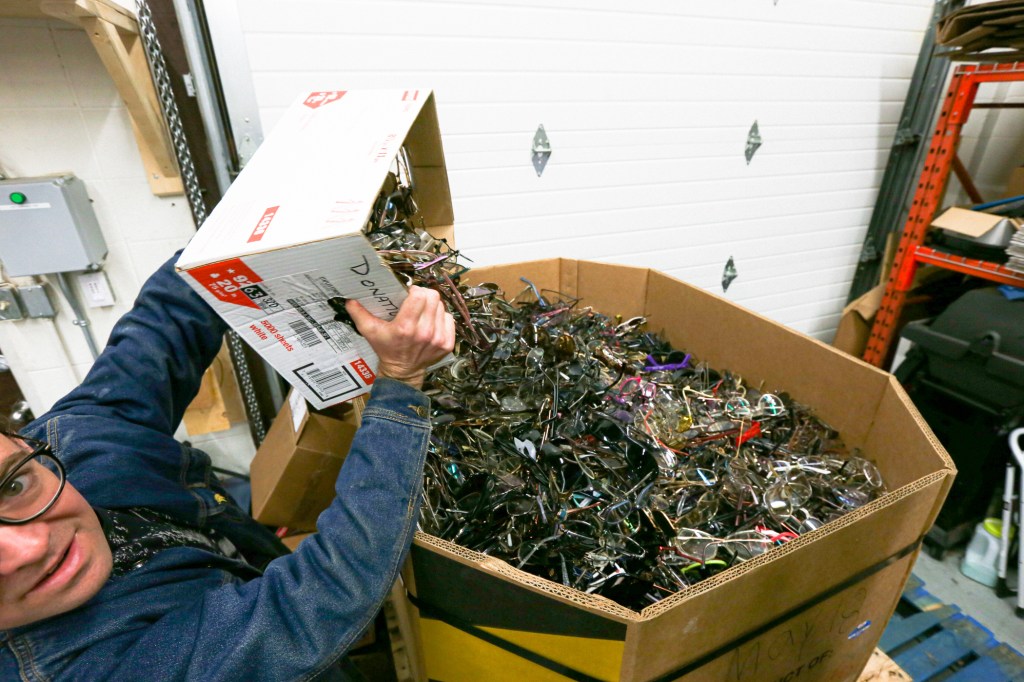
Our eyeglass lenses for And Between Us, An Ocean were sourced through two processes: in China, eyeglass lenses were gathered from factory defects, unusable for market purposes, collected by the gallery team in Beijing/Shanghai.




In Canada, we’re working with the Lions Club to gather second-hand eyeglass lenses through CLERC (Canadian Lions Eyeglass Recycling Centre), an organization that redistributes hundreds of thousands of eyeglasses each year to developing nations. CLERC’s main facility just happens to be located in our home city of Calgary/Mohkinstsis.

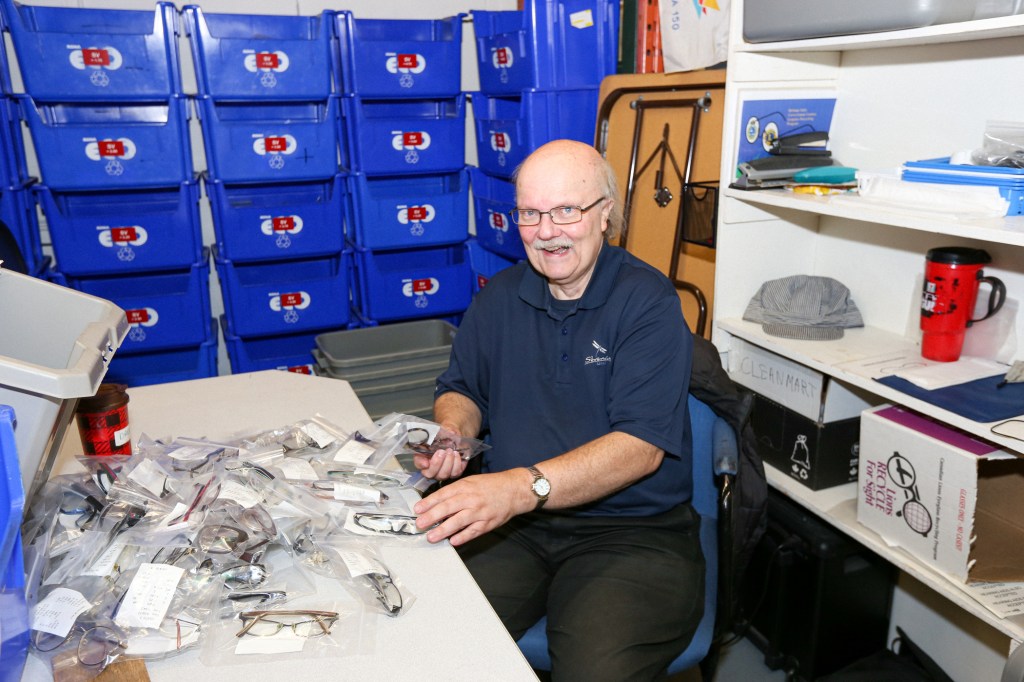
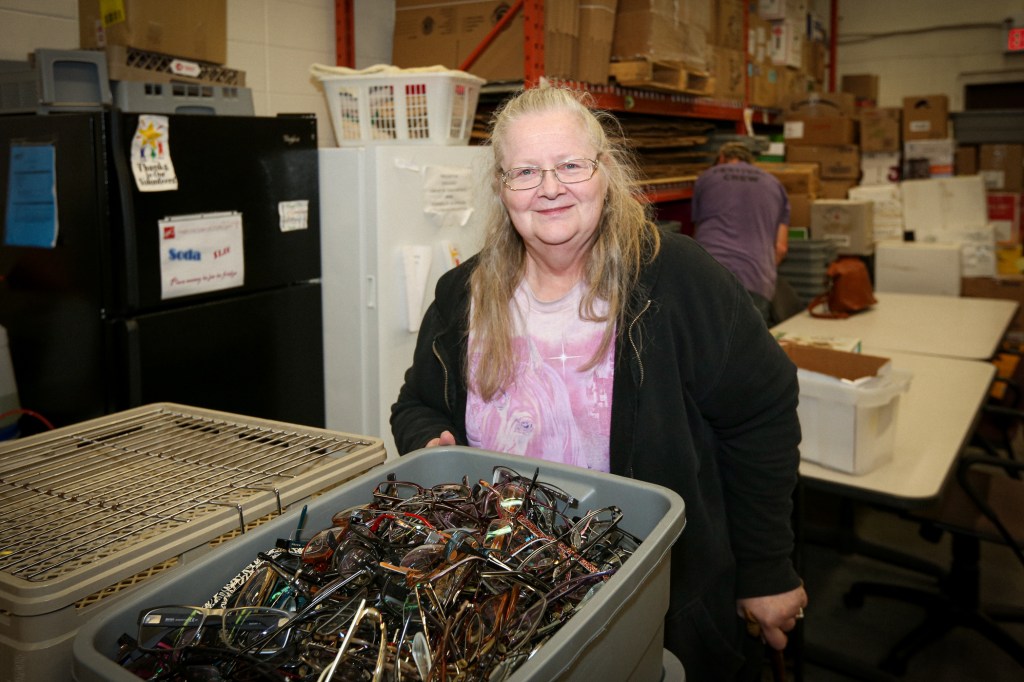

CLERC collects used eyeglasses through public donations. Some glasses cannot be recycled for one reason or another – mostly because they are too scratched or the prescription is too complicated. Normally, unusable glasses would be sent by the Lions Club to a raw materials recycling facility in California. However, in the spirit of community and waste diversion, we were able to collect thousands of used prescription lenses for our upcoming project.
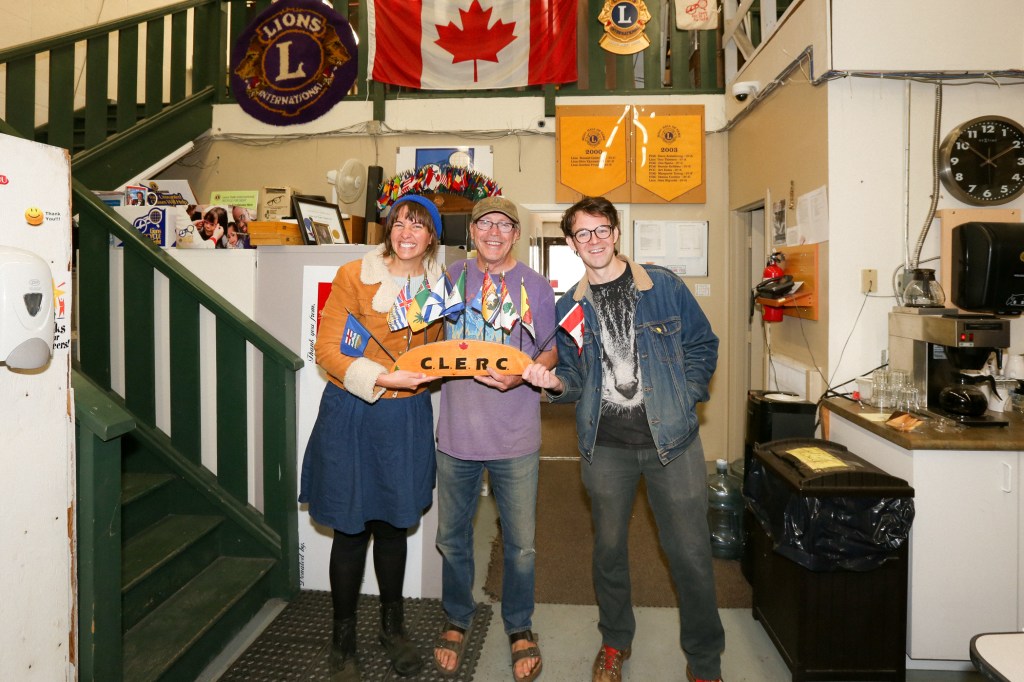
CLERC has directed over 6 million eyeglasses to the people who need them most, near and far. We were lucky to witness their work process: sorting glasses, cleaning them, inspecting them, reading their prescriptions, and packaging them for future use. Every step of the process is labour intensive and requires incredible focus (pun intended). These volunteers and staff are worth their weight in gold – or at least, polycarbonate and fine metals. Thank you, CLERC James, Darryl, Gordon, Jack, Rick, and all CLERC’s wonderful volunteers & staff.



Once we had enough prescription lenses collected (~10,000 from Canada) we sent them to meet the factory defect lenses (~20,000 from Beijing). Because of travel regulations and other COVID restrictions, we were not able to travel to assist with fabrication and install. Instead we helped develop plans and prototypes from a distance.

We worked with Liya Liu and Yuqi Wei of PIKOU (the group that organized WAVELENGTH exhibition at Times Art Museum). Together, we tested installation methods for this artwork between Calgary and their workspace in Beijing. We discussed methodologies and priorities by video call.
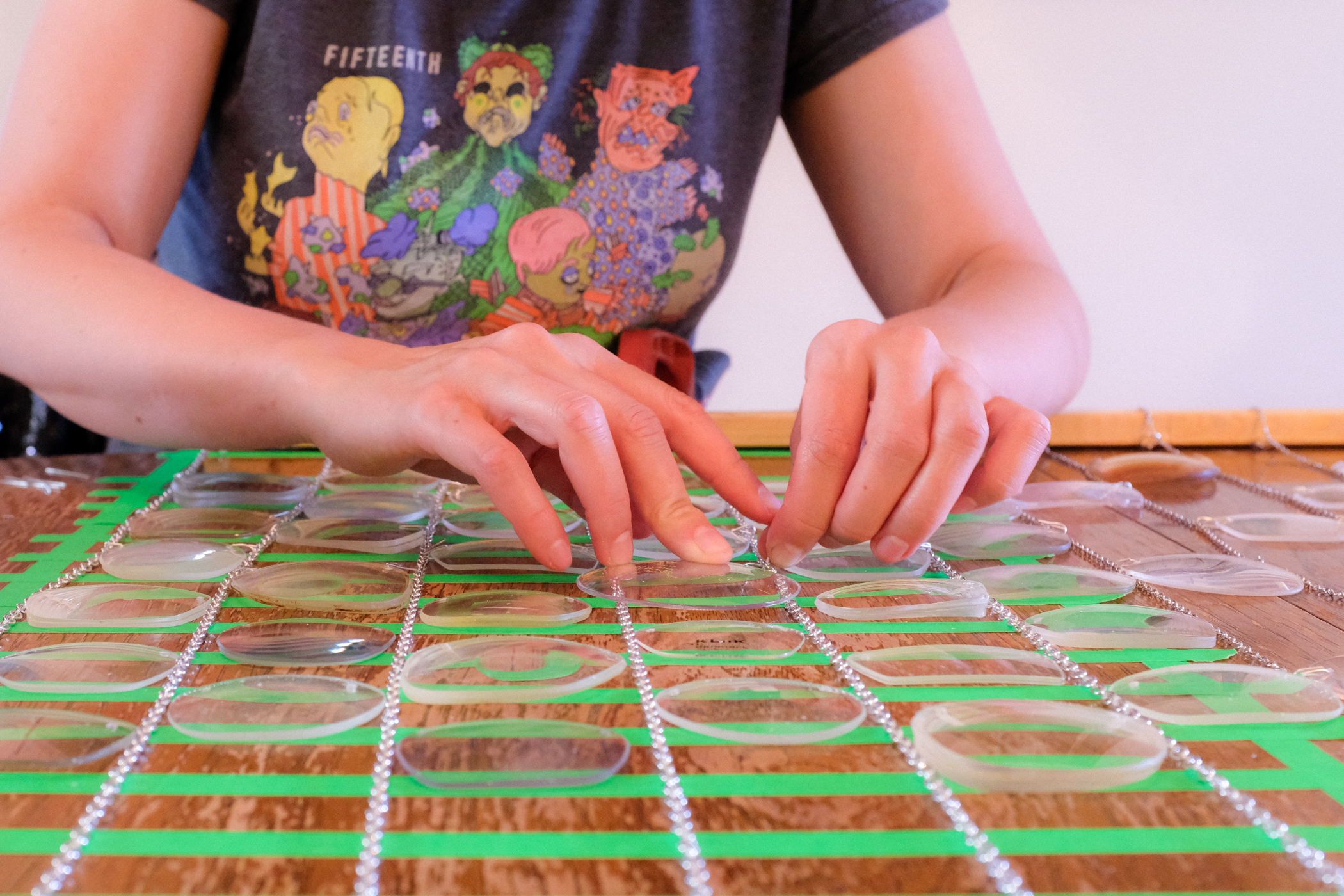

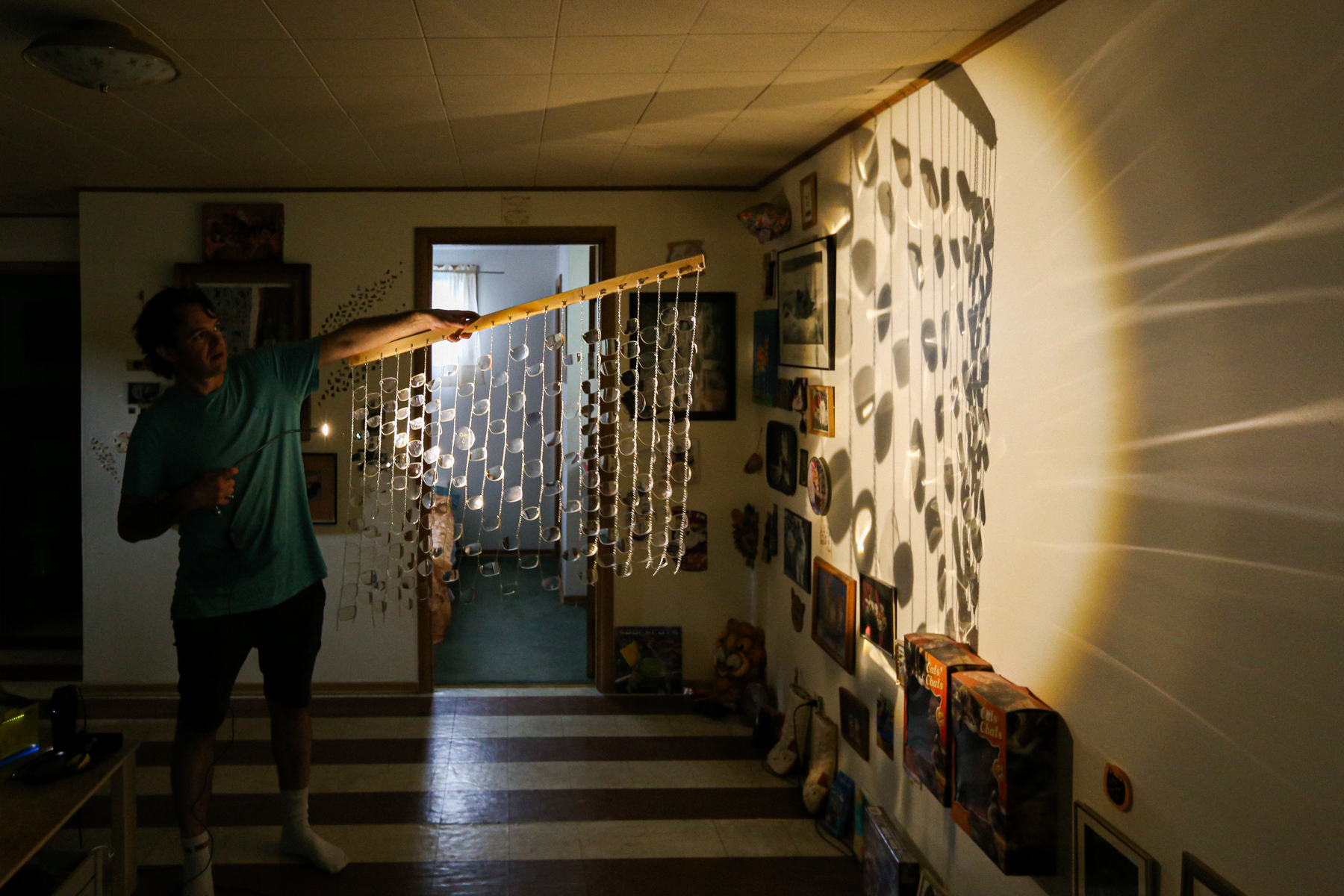
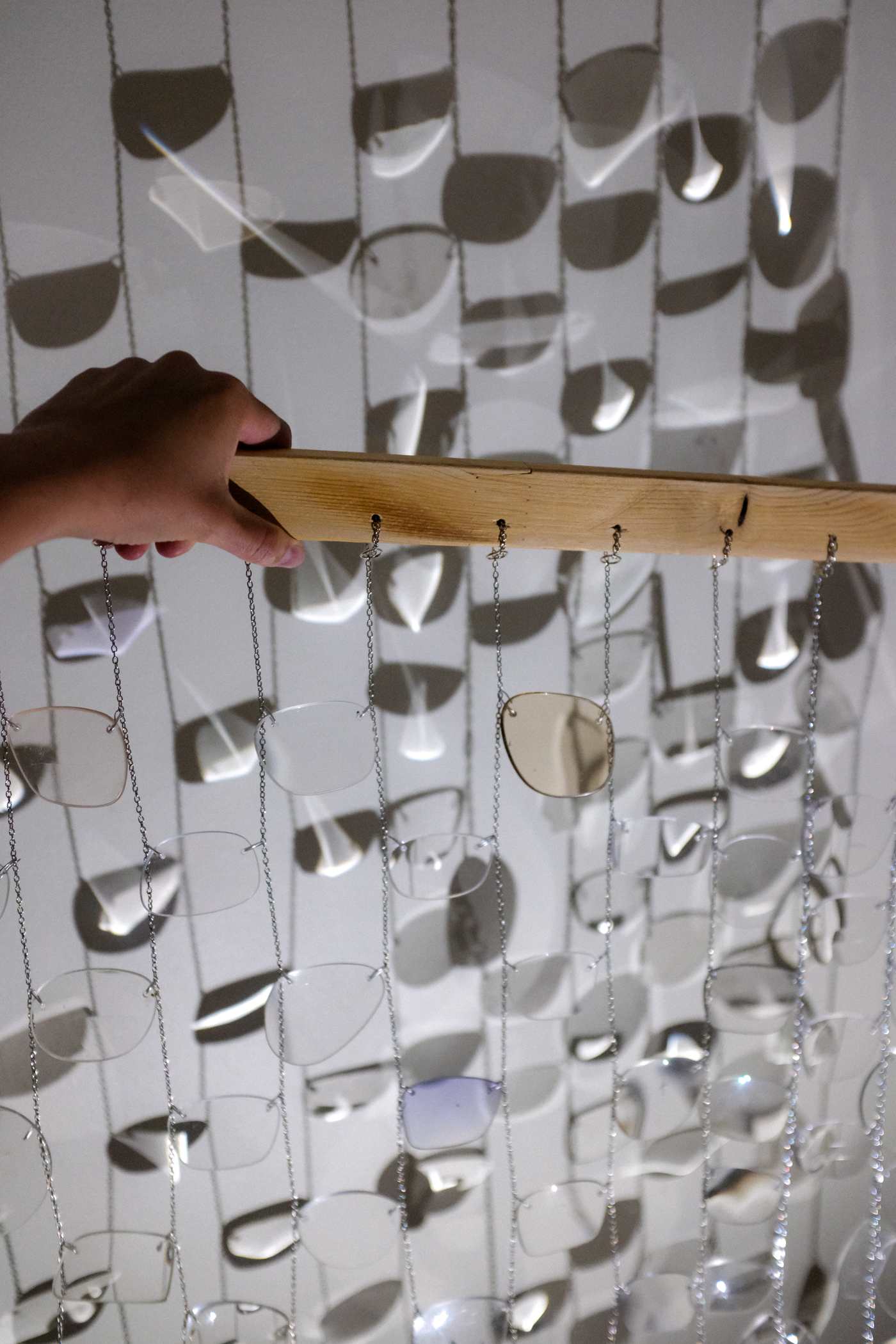

Meanwhile, a team in Beijing worked to install ~30,000 eyeglass lenses into two massive curtains bisecting Times Art Museum.
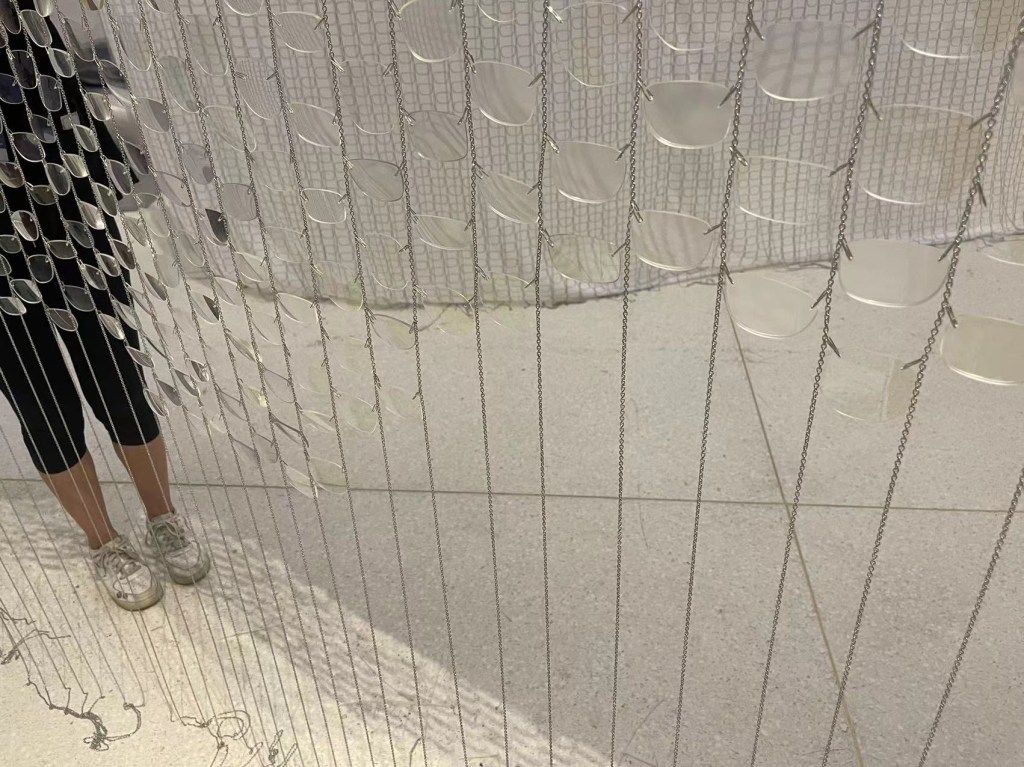

All gallery process photos courtesy of PIKOU
It’s surreal to work across a distance of 8700+ km on a project primarily coordinated and fabricated by a team far away. As we consider what it means to work at a distance, we recognize the concept of the artwork in the process itself. The title of the installation conjures a narrative about yearning across distance. And Between Us, An Ocean references the physical and cultural distance between Canada and China, but it also speaks to metaphysical separation – the distance between us, always (from the scale of atoms, up) – and our many attempts to transcend this distance in search of closeness, interspace, and togetherness.
Thank you to the PIKOU team for their work and attention to detail. See the finished artworks here.
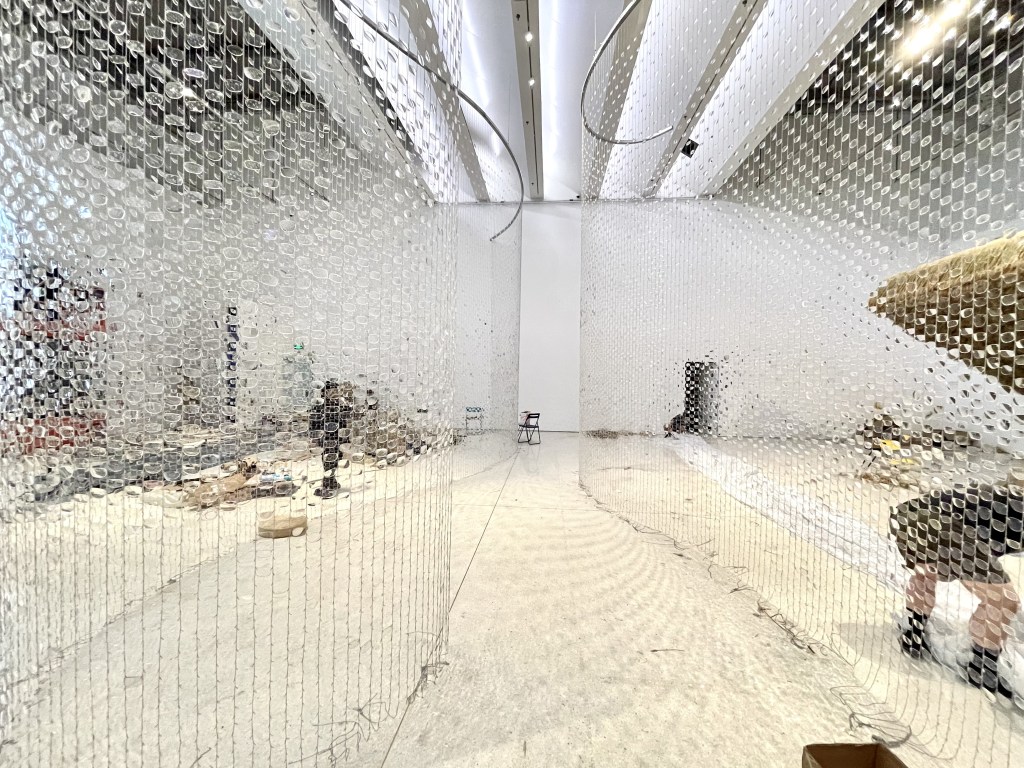



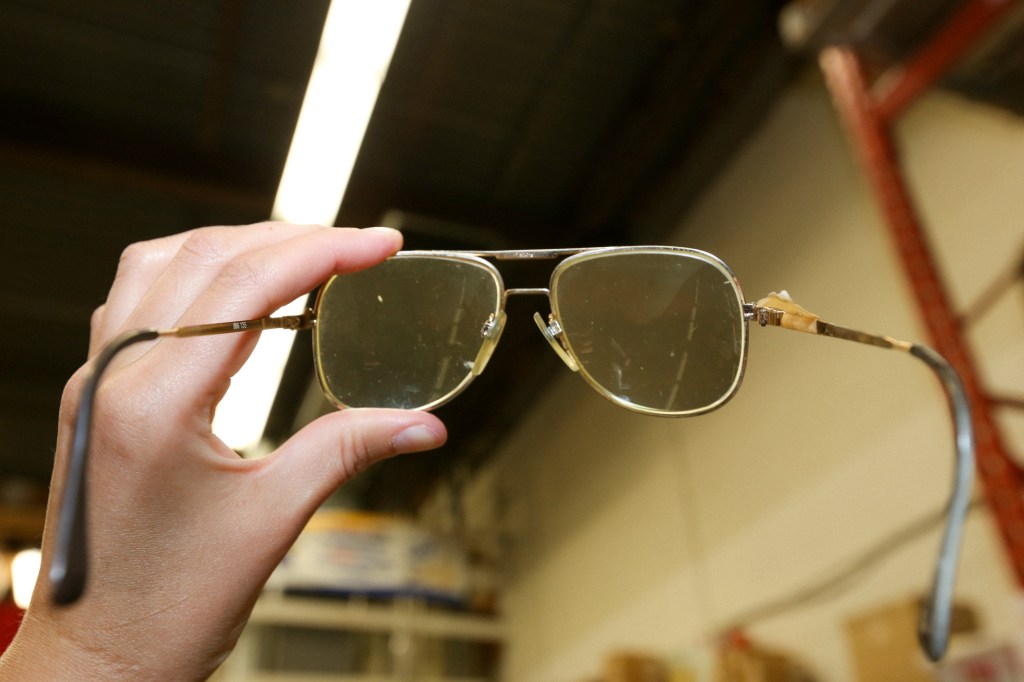
3 thoughts on “Materials + Process”